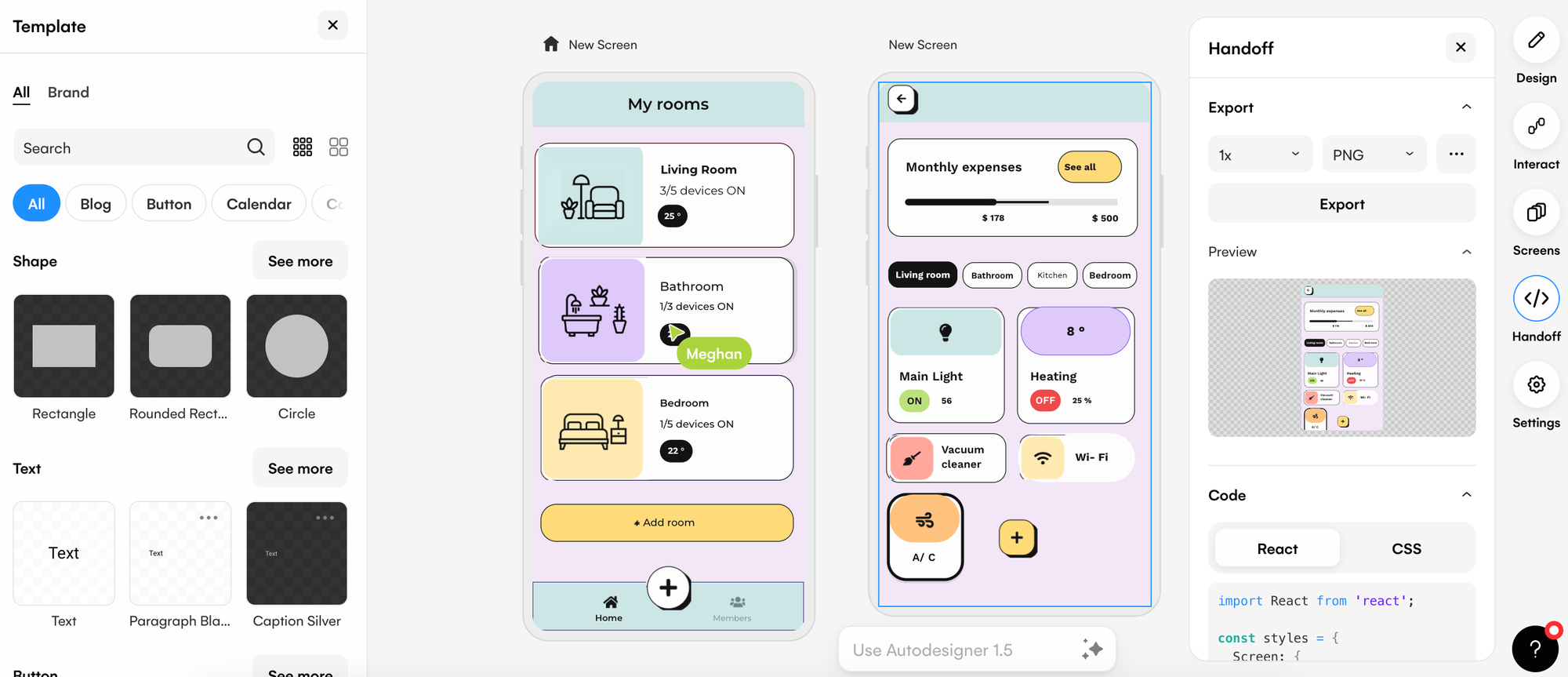
Uizard AI Design Platform: Complete Buyer's Guide
Democratizing design creation through AI-powered mockup generation
Uizard AI Design Platform democratizes design creation through AI-powered mockup generation, targeting non-designers and rapid prototyping scenarios with text-to-prototype conversion capabilities. Uizard positions itself as a design democratization platform that eliminates traditional bottlenecks between concept and prototype[47][66].
Market Position & Maturity
Market Standing
Uizard operates in the emerging AI design automation market, positioning itself between pure-play AI design solutions and established design platforms like Figma and Adobe Creative Suite[39][63].
Company Maturity
The platform's market maturity reflects the broader AI design category's emerging status, with adoption patterns showing variation by organizational size and technical sophistication.
Growth Trajectory
Growth indicators suggest expanding adoption in startup and agency environments, with documented customer success patterns spanning Y Combinator startups to established design agencies[58][49][59].
Industry Recognition
Industry recognition remains limited compared to established design platforms, reflecting the emerging nature of AI-powered design automation.
Longevity Assessment
Long-term viability assessment requires consideration of the rapidly evolving AI design landscape, where established players like Adobe and Figma are integrating AI capabilities.
Proof of Capabilities
Customer Evidence
Documented Customer Success spans multiple industries and use cases, with Pepper (Y Combinator startup) creating a 23-screen MVP in 3 days using Uizard[58]. Care Technologies successfully developed a heart-monitoring app prototype rapidly[55].
Quantified Outcomes
Quantified Business Outcomes demonstrate measurable impact: Code Line Solutions reported 40% reduction in developer communication time through improved stakeholder alignment using Uizard prototypes[61].
Market Validation
Market Adoption Patterns show success across diverse customer profiles, from resource-constrained startups requiring rapid validation to established agencies implementing collaborative workflows.
Reference Customers
Enterprise Validation includes claimed implementations at Fortune 500 companies including Adidas, Google, and Tesla[55][62].
AI Technology
Uizard's AI engine operates through three primary mechanisms: text-to-design generation via Autodesigner 2.0, screenshot-to-editable-mockup conversion, and real-time collaborative editing[47][51].
Architecture
The platform's architecture handles concurrent editing sessions while maintaining design integrity and version control, addressing common collaboration bottlenecks in distributed teams.
Primary Competitors
Primary Competitors include Figma for professional design capabilities, Adobe Creative Cloud for comprehensive design suites, and Visily for specialized marketing mockup generation[1][63][66].
Competitive Advantages
Competitive Advantages center on rapid prototyping speed with Autodesigner 2.0 generating multi-screen mockups faster than comparable AI tools[47][51].
Market Positioning
Market Positioning Context shows Uizard occupying a specialized niche complementing rather than replacing comprehensive design platforms[39][63].
Win/Loss Scenarios
Win/Loss Scenarios favor Uizard when rapid prototyping speed outweighs design precision requirements and non-designers need design input capabilities.
Key Features

Pros & Cons
Use Cases
Pricing
Featured In Articles
Comprehensive analysis of AI Visual Mock Test Tools for AI Design for AI Design professionals. Expert evaluation of features, pricing, and implementation.
How We Researched This Guide
About This Guide: This comprehensive analysis is based on extensive competitive intelligence and real-world implementation data from leading AI vendors. StayModern updates this guide quarterly to reflect market developments and vendor performance changes.
76+ verified sources per analysis including official documentation, customer reviews, analyst reports, and industry publications.
- • Vendor documentation & whitepapers
- • Customer testimonials & case studies
- • Third-party analyst assessments
- • Industry benchmarking reports
Standardized assessment framework across 8 key dimensions for objective comparison.
- • Technology capabilities & architecture
- • Market position & customer evidence
- • Implementation experience & support
- • Pricing value & competitive position
Research is refreshed every 90 days to capture market changes and new vendor capabilities.
- • New product releases & features
- • Market positioning changes
- • Customer feedback integration
- • Competitive landscape shifts
Every claim is source-linked with direct citations to original materials for verification.
- • Clickable citation links
- • Original source attribution
- • Date stamps for currency
- • Quality score validation
Analysis follows systematic research protocols with consistent evaluation frameworks.
- • Standardized assessment criteria
- • Multi-source verification process
- • Consistent evaluation methodology
- • Quality assurance protocols
Buyer-focused analysis with transparent methodology and factual accuracy commitment.
- • Objective comparative analysis
- • Transparent research methodology
- • Factual accuracy commitment
- • Continuous quality improvement
Quality Commitment: If you find any inaccuracies in our analysis on this page, please contact us at research@staymodern.ai. We're committed to maintaining the highest standards of research integrity and will investigate and correct any issues promptly.